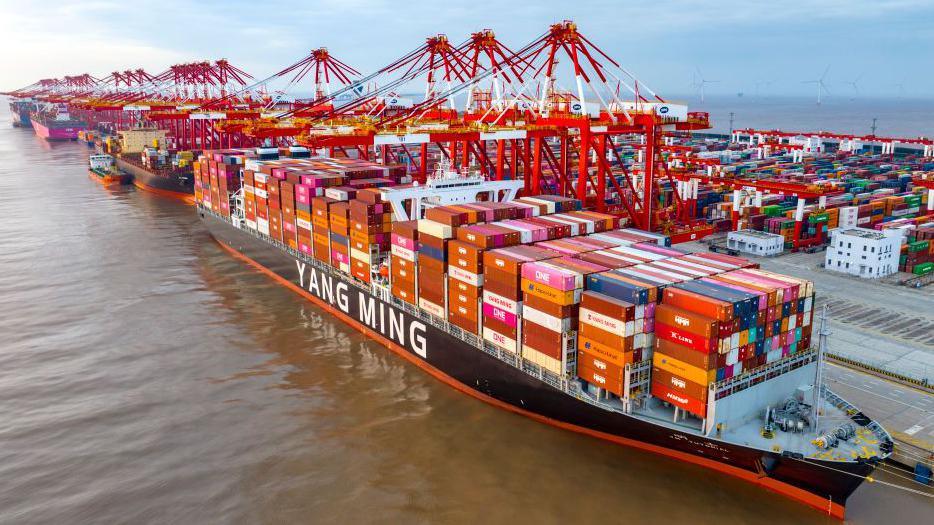Inside the race for Greenland's mineral wealth
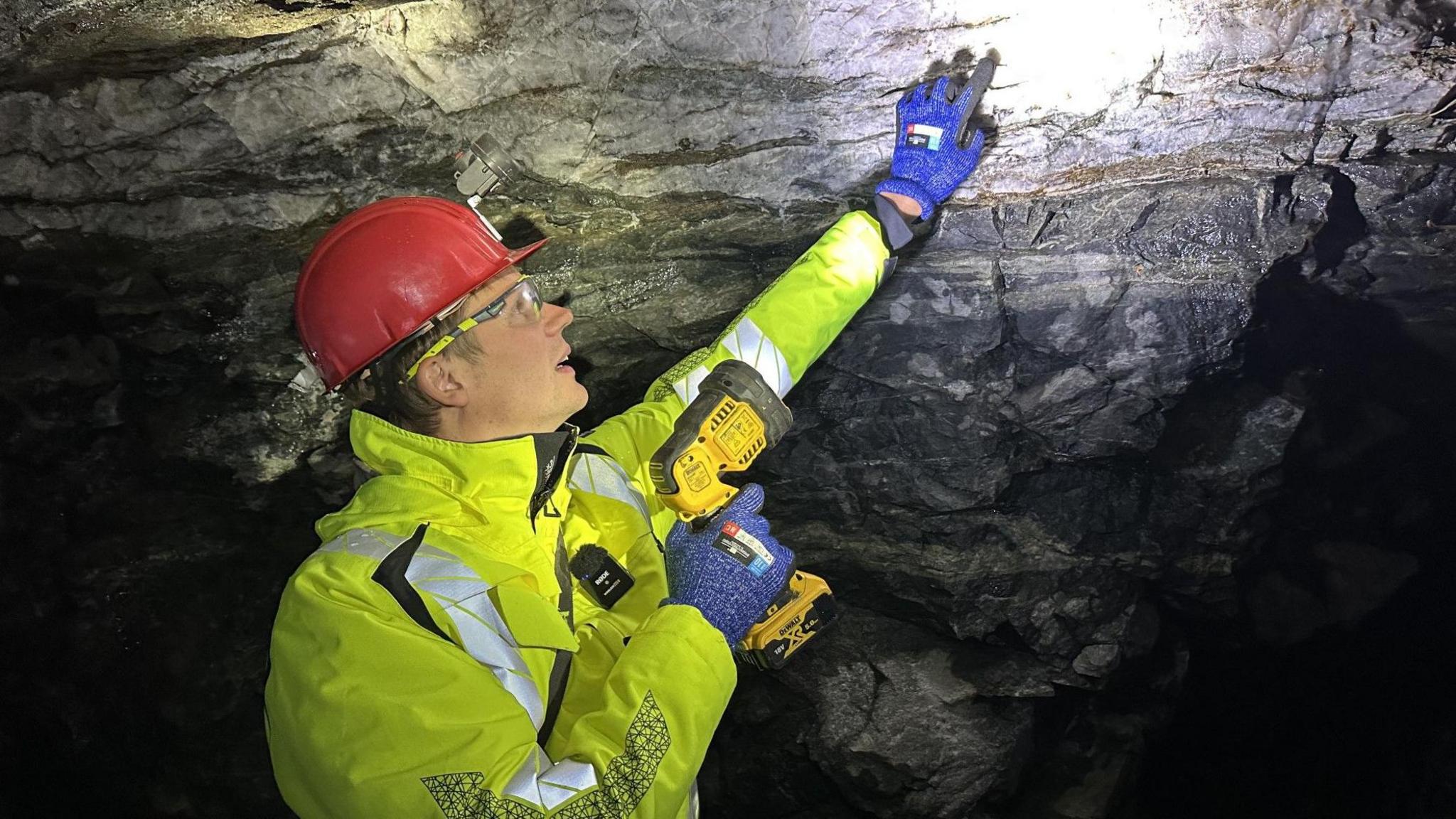
Mining firm boss Eldur Olafsson says Greenland can supply the minerals the West needs for "decades"
- Published
President Donald Trump has said he thinks the US will gain control of Greenland, underlining his persistent claim on the Arctic island, on one occasion pointing to "economic security" as the reason. While the autonomous Danish territory has been quick to say it isn't for sale, its vast and mostly untapped mineral resources are in great demand.
Jagged grey peaks suddenly appear before us, as the motorboat navigates choppy coastal waters and dramatic fjords at Greenland's southern tip.
"Those very high pointy mountains, it's basically a gold belt," gestures Eldur Olafsson, the chief executive of mining company Amaroq Minerals.
After sailing for two hours we stepped ashore at a remote valley beneath Nalunaq mountain, where the firm is drilling for gold.
It's also scouring the surrounding mountain range and valleys, hunting for other valuable minerals, having snapped up exploration licences spanning over 10,000 sq km (3,861 sq miles).
"We're looking for copper, nickel, and rare earths," says the Icelandic boss. "This is uncharted, and still has the potential to have multiple big deposits."
The base camp is a cluster of mobile buildings and bright orange accommodation tents housing more than 100 staff, including Greenlanders, Australians, and British former coal miners. From there a road climbs up the valley, and we drive by car into the gold mine, following a dark tunnel upwards inside the mountain.
"See here!" says Mr Olafsson pointing to a seam of white quartz and a thin dark line. "Gold, gold, gold. All the way over. Isn't that extraordinary?"
The mine, which Amaroq bought in 2015, had operated for most of the preceding decade, but closed due to then falling gold prices, and high operating costs.
Amaroq is confident that the mine will now be profitable. And it plans to ramp up production this year, where it has built a brand new processing plant to crush the ore and refine the precious metal into gold bars.
"We can either walk off site every month with a suitcase of gold, versus a 30,000 tonne ship [carrying the ore]," explains Mr Olafsson.
He says that Greenland presents an unrivalled opportunity because its huge mineral reserves are largely untouched.
"It can be the supplier of all the minerals the Western world will need for decades," adds Mr Olafsson. "And that is a very unique position."
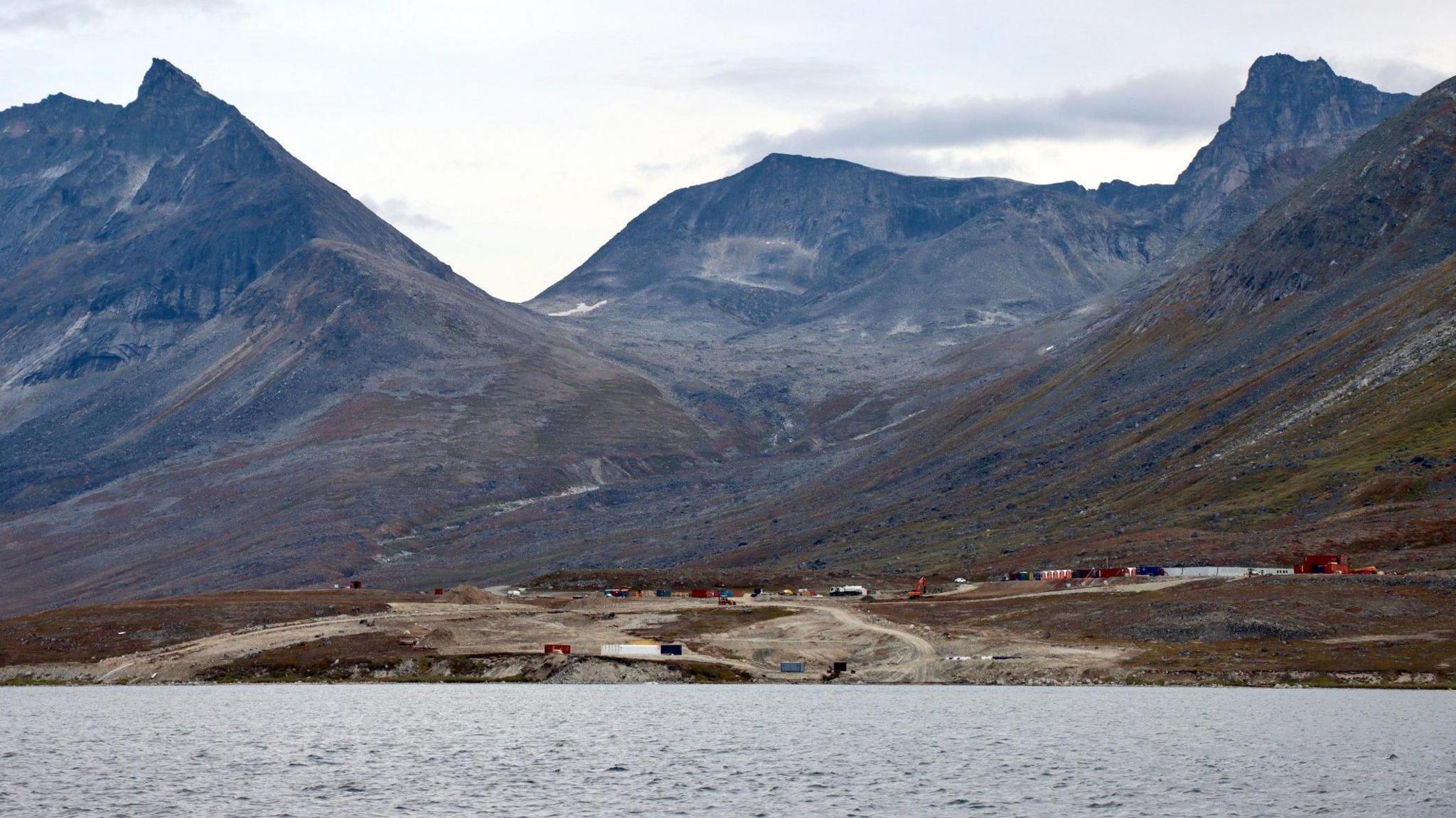
The mining facility at Nalunaq is based at a dramatic location
Yet currently there are just two active mines on the entire island.
Greenland is a self-governing territory that is part of Denmark, but controls its own natural resources.
It's endowed with the eighth largest reserves of so-called rare earth elements, which are vital for making everything from mobile phones to batteries and electric motors. It also has large amounts of other key metals, such as lithium and cobalt.
There is oil and gas too, but new drilling is banned, while deep-sea mining has also been ruled out.
Christian Kjeldsen, director of Greenland's Business Association, says that the global "geopolitical situation right now is driving interest in the world's biggest island".
He points to China having the world's largest reserves of rare earth metals, while the West wants to secure alternative supplies.
"You have a very strong China sitting very heavily on the critical raw materials," he says.
Denmark boosts Greenland defence after Trump repeats desire for US control
- Published24 December 2024
Up to Greenland to decide its future, Danish PM tells Trump
- Published16 January
Trump ramps up threats to gain control of Greenland and Panama Canal
- Published8 January
That has fuelled a growing focus among Western nations to get access to Greenland's minerals. China has also been keen to get involved, but its presence is limited.
Reuters recently reported, external that the US lobbied an Australian mining firm not to sell Greenland's biggest rare earth project to potential Chinese buyers.
Greenland's Minister for Business, Trade and Raw Materials, Naaja Nathanielsen, says that interest in the territory's minerals has "absolutely increased within the last five years or so".
She adds: "We're used to being a hotspot for the climate crisis. We want to be a part of the solution."
Permits have now been given for 100 blocs across Greenland, where companies are searching for viable deposits. British, Canadian and Australian mining firms are the biggest foreign licence holders, while Americans hold just one.
But there are many more steps before these sites become potential mines.
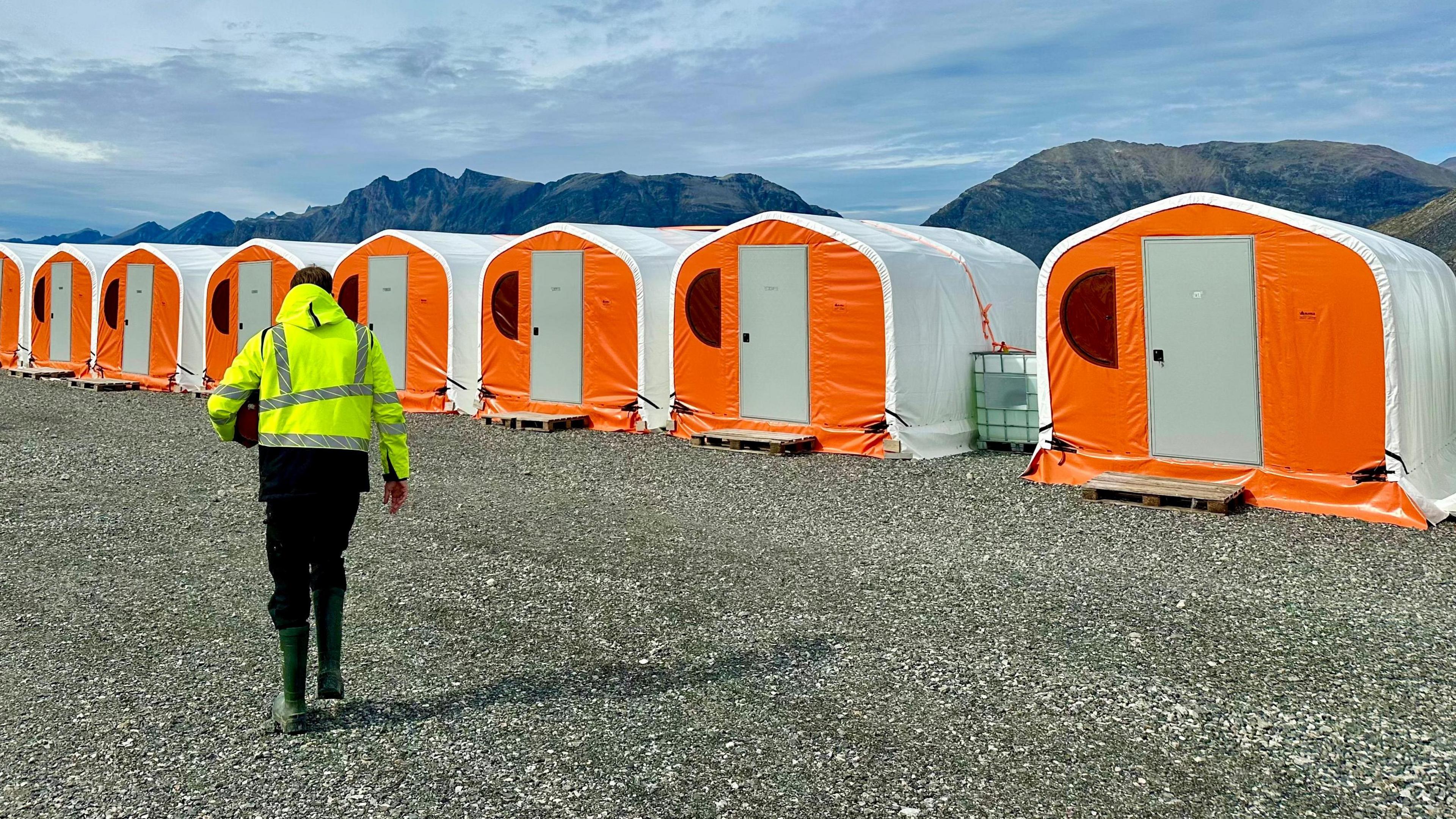
Current accommodation at the Nalunaq mine is very basic
Yet while Greenland may be sitting on mineral riches, any "gold rush" continues to be slow to materialise.
The economy, which has an annual GDP of just over $3bn (£2.4bn), is still driven by the public sector and fishing. And the territory also relies on an annual $600m subsidy from Denmark.
Greenland's politicians hope that mining revenues will reduce reliance on the annual $600m subsidy from Denmark, and help boost independence efforts. But in the meantime Greenland is making more money from tourism.
Officially mining is still important for independence, says Javier Arnaut, head of Arctic Social Sciences at Greenland University. "But in practical terms, you can see that there are very few mining licenses awarded."
Ms Nathanielsen concedes that while there are partnerships being developed with the US and EU, "we still have not seen large amounts of money flowing into this sector". She hopes that there will be another three to five mines operating within the next decade.
However mining is not easy in Greenland because of its remote geography and weather. It's the world's largest island and 80% of it is covered by an ice sheet. It has rugged mountains and no roads between settlements.
"It's an arctic terrain," says Jakob Kløve Keiding, from the Geological Survey of Denmark and Greenland, which has mapped the territory's deposits. "We have problems with harsh conditions in terms of the climate and limited infrastructure. So it's quite expensive to open a mine."
Those high costs, coupled with low global metal prices, have held back investors.
Others blame red tape for the sector's slow growth. The territory has strict environmental regulations and social impact requirements, and getting permits can take time.
Ms Nathanielsen maintains that most communities do support mining, and that it boosts local economies. "They [overseas miners] are shopping in the local shop. They're employing local employees. They're chartering a local boat or helicopter," she says.
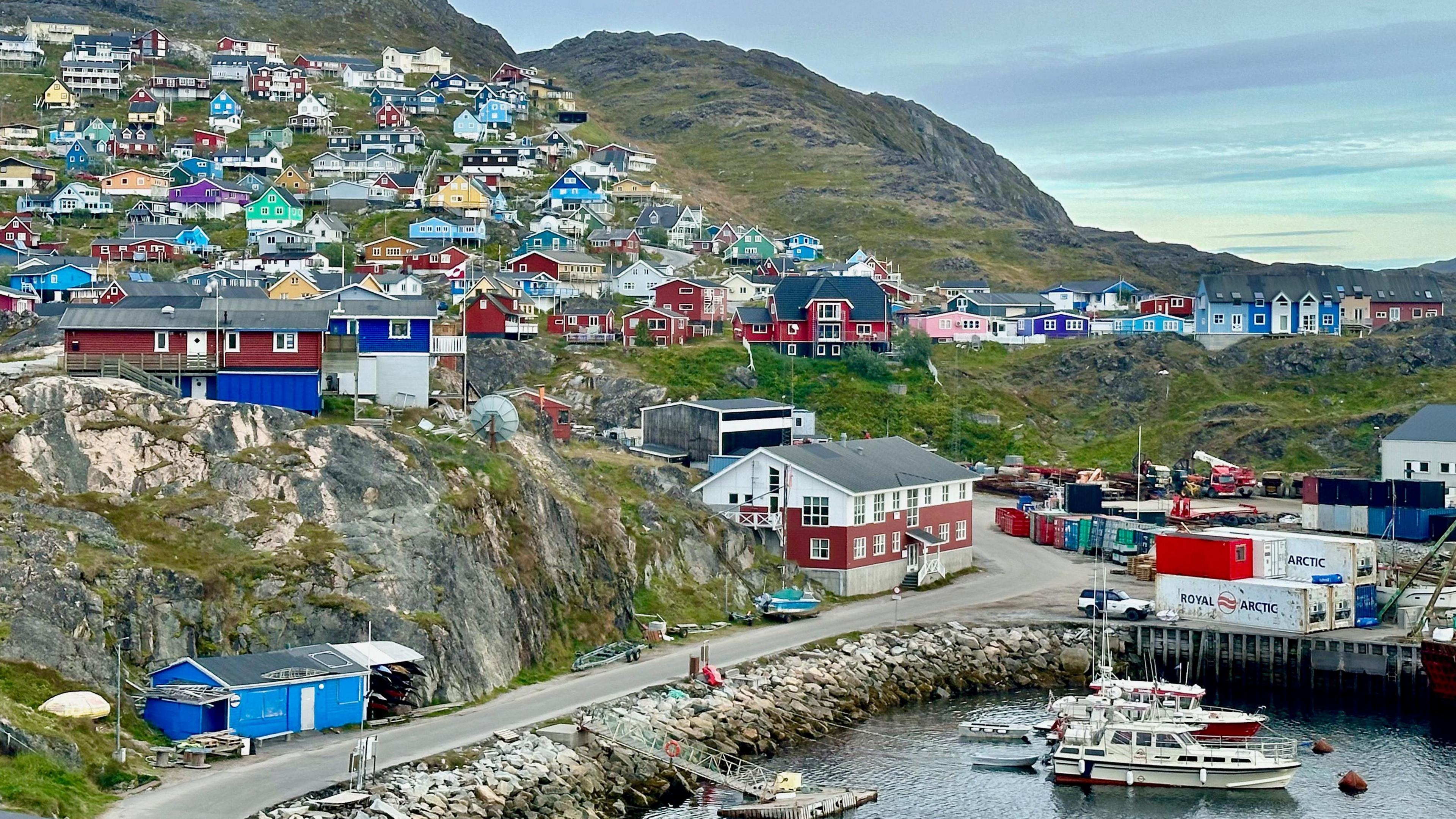
Greenlanders are unsure whether a mining boom will help local people
Yet in the south's biggest town, Qaqortoq, resident Heidi Mortensen Møller is sceptical whether new mines will lead to employment for locals. "When they say they're going to add jobs, who are they talking about?"
Jess Berthelsen, head of local labour union, SIK, says that many people think mining income "will leave the country", and not benefit Greenland. But he supports the growth of the sector. "Greenland needs more income and to earn money from other ways than fishing."
It's unclear how Trump's latest gambit on Greenland will play out. However, the territory's prime minister Mute Egede said earlier this month that "we need to do business with the US" and that it was "doors open in terms of mining".
Mr Kjeldsen from the business association, hopes it will be bring "much needed investment" to the sector. "On the other hand, if the uncertainty surrounding the signals from Trump drag on for a longer period, there is a risk that this might impact the investment environment negatively."
Related topics
Read more global business stories
- Published17 January
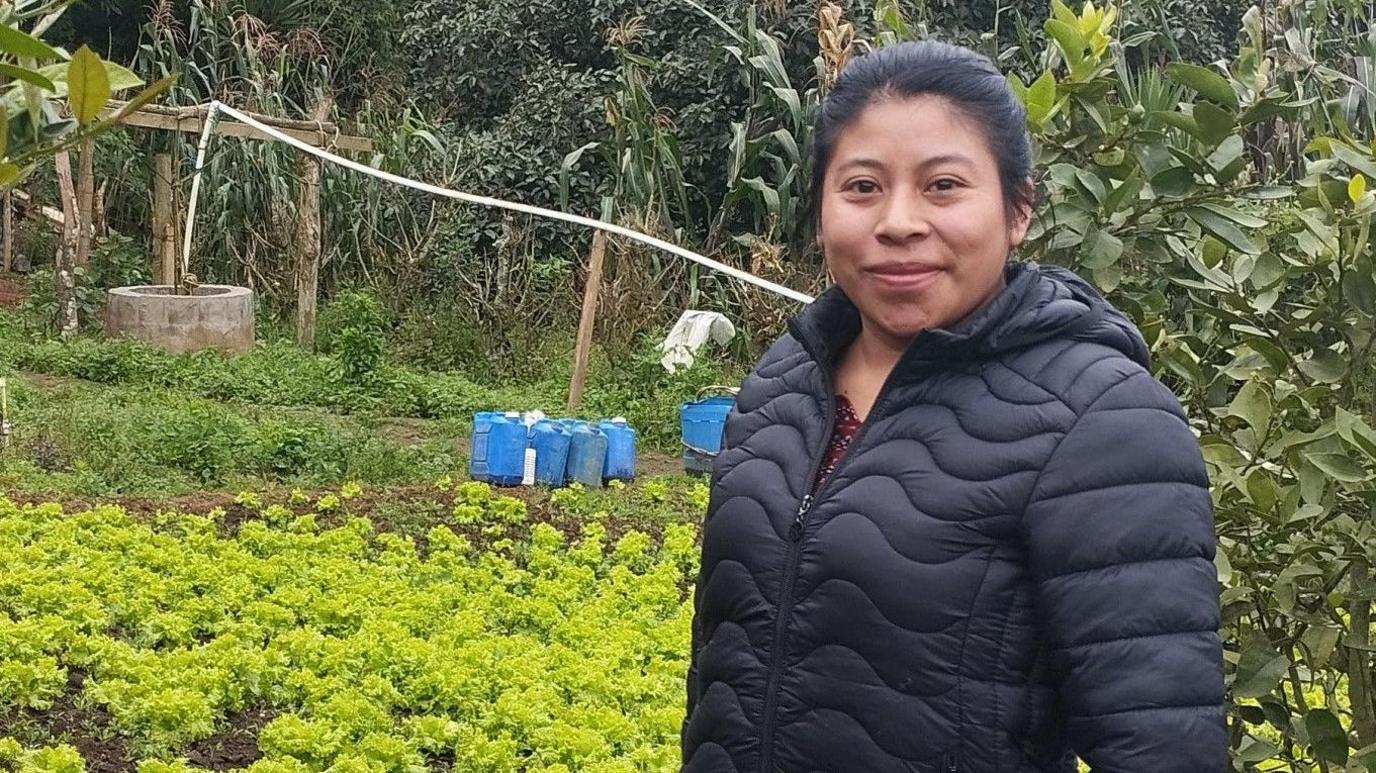
- Published16 January
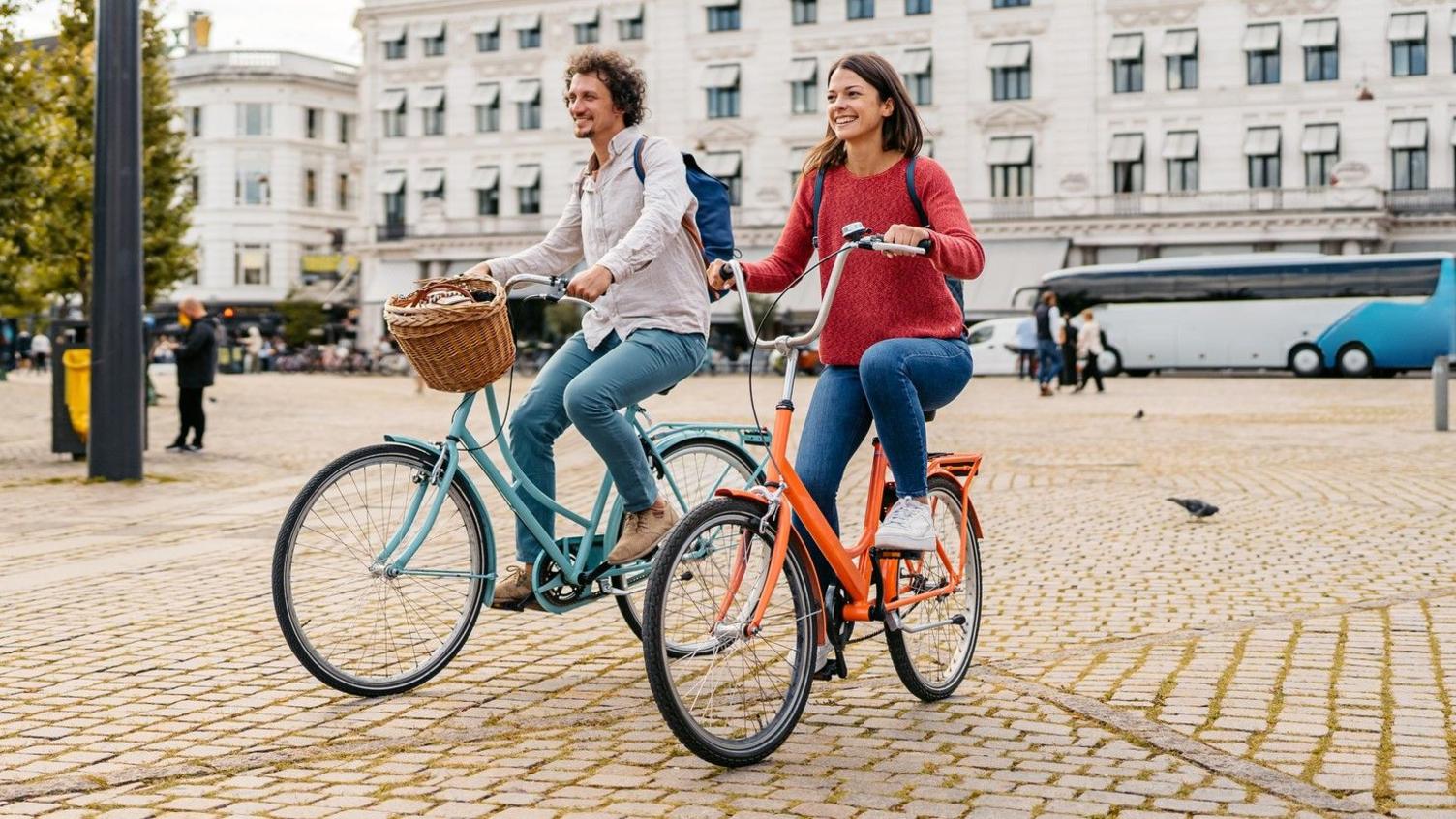
- Published13 January
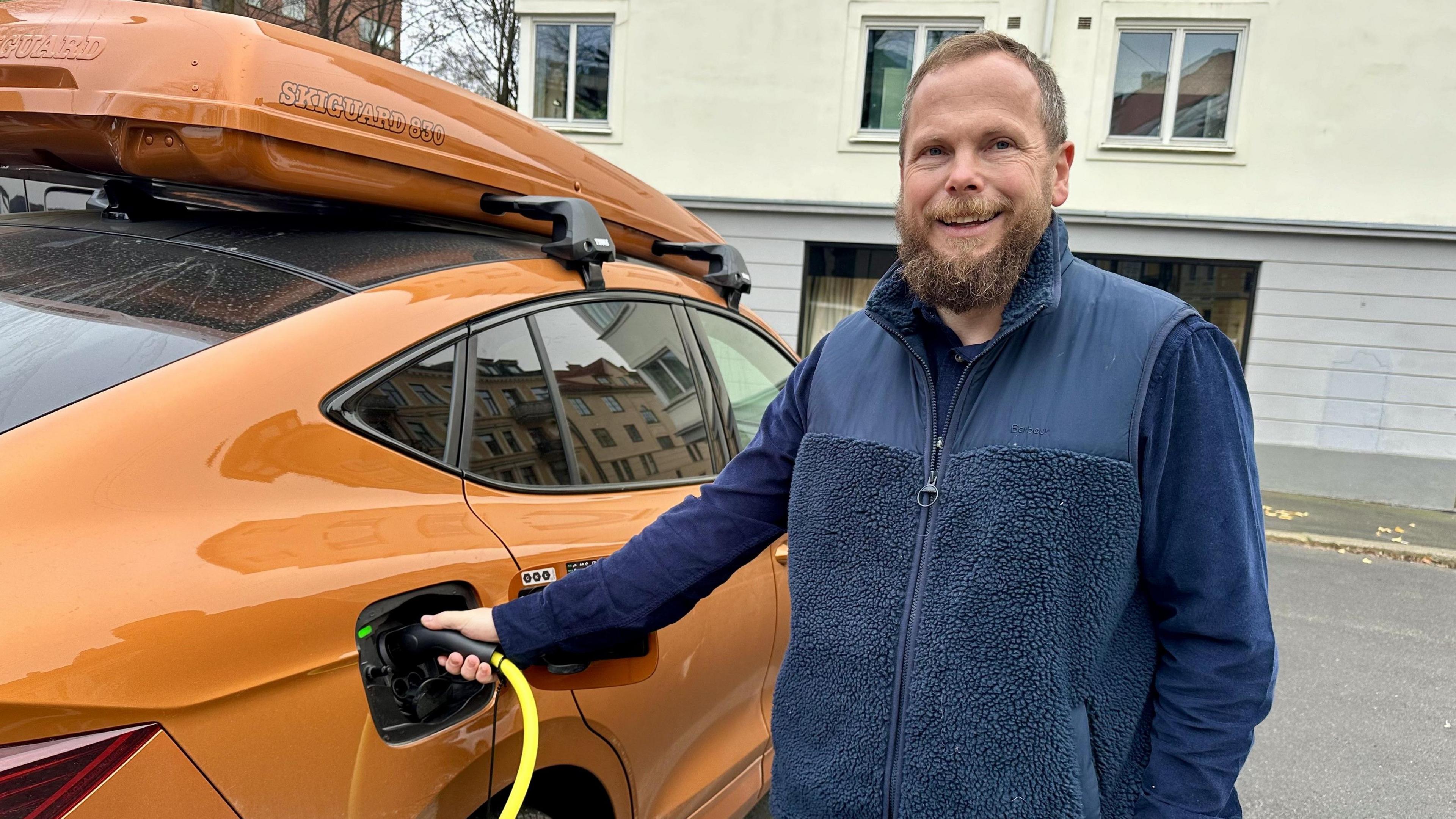
- Published9 January
